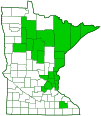Painted Suillus
(Suillus spraguei)
Conservation • Description • Habitat • Ecology • Distribution • Taxonomy
Conservation Status |
|
|||||||
| IUCN Red List | not listed |
|||||||
| NatureServe | not listed |
|||||||
| Minnesota | not listed |
|||||||
Description |
||
Painted Suillus is a common “Slippery Jack mushroom”. It is found from summer to early fall in mixed and coniferous forests in northeastern United States and adjacent Canadian provinces west to Minnesota. It grows on the ground, alone or in groups, under eastern white pine. It obtains its nutrients from the rootlets of trees (mycorrhizal). The cap is convex at first with the margin rolled under. As it matures the cap flattens out. The mature cap is 1¼″ to 4¾″ wide and broadly convex, flat, or slightly depressed in the middle. Unlike other Slippery Jack mushrooms (genus Suillus), the cap is dry, not slimy. It is densely covered by large, pink to brick-red scales. The scales are composed of matted hair-like fibers (fibrils). They readily wash away in the rain revealing a dull yellow background. There are sometimes remnants of the protective pore covering (partial veil) hanging from the margin. As the cap ages the background color fades to tan or whitish and the scales fade to reddish-brown. The stalk is firm, solid, firm, and dry. It is 1¼″ to 4¾″ long and The flesh is thick and yellow. It often turns pinkish when bruised. It is edible but people disagree about whether it is worth it. As with all boletes (Order Boletales) there are no gills. Instead, there is a sponge-like layer of tubes on the underside of the cap. The layer is covered with a whitish partial veil at first, but this tears away as the mushroom matures. The layer is broadly attached to the stalk (adnate) or slightly continues down the stalk (decurrent). The tubes are light yellow, ⅛″ to 5 ⁄16″ deep, and have large, angular, 1 ⁄32″ to 3 ⁄16″ wide openings (pores). They are more or less radially arranged. They turn reddish or reddish brown with age or when bruised. The spore print is brown. |
||
Similar Species |
||
Habitat and Hosts |
||
|
||
Ecology |
||
Season |
||
|
||
Distribution |
||||
|
Sources |
|||
| 1/24/2023 | ||||
Occurrence |
||||
Common |
||||
Taxonomy |
|||
| Kingdom | Fungi (fungi) | ||
| Subkingdom | Dikarya | ||
| Phylum | Basidiomycota (club fungi) | ||
| Subphylum | Agaricomycotina (jelly fungi, yeasts, and mushrooms) | ||
| Class | Agaricomycetes (mushrooms, bracket fungi, puffballs, and allies) | ||
| Subclass | Agaricomycetidae | ||
| Order | Boletales (boletes and allies) | ||
| Suborder | Suillineae | ||
| Family | Suillaceae | ||
| Genus | Suillus (slippery Jacks) | ||
Painted Suillus was originally named Boletus spraguei in 1872. The next year the name was changed to Boletus pictus. In 1898 in was transferred to the genus Suillus, and became Suillus pictus. In 1945, the original species epithet was restored and it became Suillus spraguei. |
|||
Synonyms |
|||
Boletinus pictus Boletus pictus Boletus spraguei Suillus pictus |
|||
Common Names |
|||
Eastern Painted Suillus Painted Slipperycap Painted Suillus Red and Yellow Suillus |
|||
|
|||
The common name of the genus Suillus is “Slippery Jack”. This refers to the slimy cap, a characteristic shared by most mushrooms in the genus. The one outlier in Minnesota is Painted Suillus (Suillus spraguei). |
|||
Glossary
Mycorrhizal
A symbiotic, usually beneficial relationship between a fungus and the tiny rootlets of a plant, usually a tree.
Partial veil
A protective covering over the gills or pores of a developing mushroom. At maturity it disappears, collapses into a ring around the stalk, or wears away into a cobwebby covering and ring zone.
Visitor Photos |
|||||
Share your photo of this fungus. |
|||||
| This button not working for you? Simply email us at info@MinnesotaSeasons.com. Attach one or more photos and, if you like, a caption. |
|||||
April Carroll |
|||||
This mushroom is growing in the wetlands area of my property. I thought I had it identified as Dryad’s Saddle, but it is growing on the ground and not on a tree. |
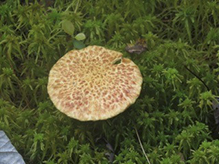 |
||||
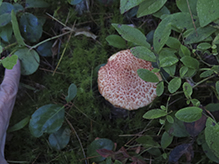 |
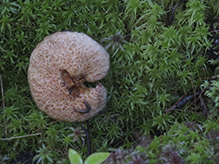 |
||||
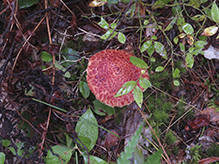 |
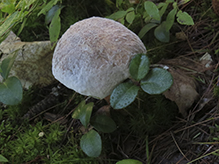 |
||||
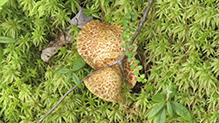 |
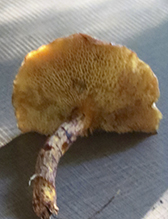 |
||||
MinnesotaSeasons.com Photos |
|||||
Cap |
|||||
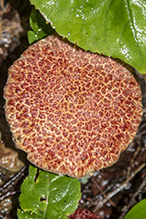 |
|||||
Stalk |
|||||
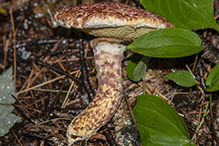 |
|||||

Slideshows |
||

Visitor Videos |
|||
Share your video of this mammal. |
|||
| This button not working for you? Simply email us at info@MinnesotaSeasons.com. Attach a video, a YouTube link, or a cloud storage link. |
|||
Other Videos |
|||
| Bolete & Suillus Mushroom Identification with Adam Haritan Learn Your Land |
|||
About
Published on Jul 25, 2016 Bolete and suillus mushrooms are sought out by many foragers throughout the summer months. In this video, I briefly discuss bolete mushroom identification while expanding upon two edible suillus species — the painted suillus (Suillus pictus) and the dotted stalk suillus (Suillus granulatus). Follow Adam Haritan online here: |
|||
| Painted Suillus Mike's Nature Journal |
|||
About
Published on Jul 19, 2015 Also called Painted Bolete. |
|||
| Painted Suillus Mark Robie |
|||
About
Published on Oct 7, 2013 |
|||


Created: 9/20/2018
Last Updated:
